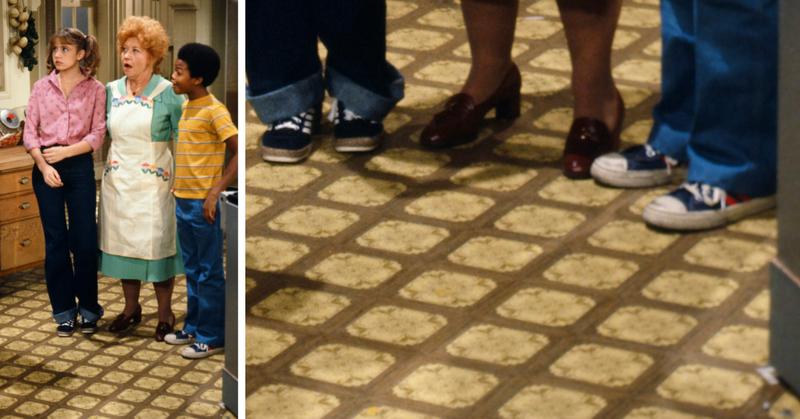Floored In The '70s: The Ugly Vinyl And Linoleum Beneath Our Feet
By | July 5, 2018

Remember the linoleum and vinyl flooring that seemed to be in every 1970s kitchen? The durability and versatility of vinyl or linoleum flooring made these materials extremely popular during the '70s. With more and more women entering the workforce, flooring manufactures marketed them as a flooring product that didn’t need routine waxing, saving housewives and working women (sexist, we know) from the back-breaking chore of waxing the kitchen floor.
In keeping with the groovy times, flooring décor was anything but plain. Linoleum and vinyl were available in a wide variety of crazy patterns and color schemes that accompanied the questionable interior design trends of the decade.
Linoleum is the older material, invented in the mid-1800s, and it's both all-natural and biodegradable. Vinyl flooring is synthetic, manufactured using chemicals such as PVC, which is toxic. So please... don't eat vinyl flooring, no matter how tasty it looks.
Harvest Gold -- Everywhere You Looked!

Harvest gold was the go-to color of the '70s kitchen (and indeed, most shades of yellow were considered desirable). Not only was it a hot linoleum and vinyl color, but it could be found on appliances, wallpaper, cabinets, curtains, back-splashes, and accessories.
Going Green

The rebels who didn’t decorate using harvest gold often chose green as their flooring color. Not just any shade of green, though. Avocado green was a top choice and was even paired with harvest gold for an earthy, autumn warmth. For many people, the 1970s was a time of getting back to nature, spurred on by a new environmentalist movement. The decorating trend was to bring the outdoors inside, and shades of green did just that. Linoleum and vinyl flooring took this trend one step further by offering bold, botanical patterns to replicate nature.
Faux Bricks, Faux Wood, Faux Tile

Why bother with real wood or stone floors when you could have the fake stuff? Manufacturers developed several styles of linoleum or vinyl flooring that was meant to look like wooden boards, stone pavers, or bricks. As the Bicentennial rolled around, home decorating trends recalled our pioneer days with an emphasis on rustic-looking flooring. With durable floor coverings, 1970s homeowners could have the best of both worlds: an old-fashioned looking floor with easy maintenance.
Wild And Crazy Patterns

1970s kitchen floors were anything but plain. Linoleum and vinyl were available in lots of bold patterns and homeowners loved them. While today, we may think the patterned flooring gives the kitchen a rather busy look, it was all the rage in the '70s. Some patterns featured geometric shapes while others took their inspiration from nature. Still others were modeled after Mediterranean terraces.
Seventies Flooring Posed A Danger

Some of the linoleum and vinyl flooring of the 1970s posed a danger to people, and we aren’t talking about getting your sock snagged on a crack. Cheaper coverings had a tendency to crack and cause tripping hazards. Some of the vinyl flooring manufactured during the 1970s contained asbestos, a carcinogenic material that could also cause breathing trouble. It wasn’t until the 1980s that the dangers of asbestos were discovered and manufacturers stopped using it in their vinyl flooring.
